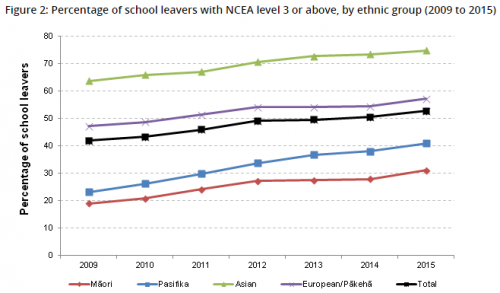Achieving parity
05 April 2017 | media
Universities support TEC's call for participation parity for Māori and Pasifika school leavers but say they are hamstrung by the comparatively low numbers achieving UE while at secondary school.
Ministry figures for 2015 show only 16.8% of Maori and 20.9% of Pasifika school leavers achieve UE, compared with 46.4% of European/Pakeha and 66.1% of Asian school leavers. [1]
All eight universities already offer special teams who go out to schools to help encourage young Māori and Pasifika students to consider university as an option. When enrolled, they also provide strong academic and learning support programmes, mentoring and scholarships as well as pastoral care to support student achievement. Initiatives like the Starpath Project, launched by the University of Auckland, are helping predominantly Māori and Pasifika students from low to mid socio-economic backgrounds get into tertiary education.
These activities are having an impact with the numbers of enrolled Māori and Pasifika students continuing to grow. Māori bachelor’s degree EFTS have increased by 25% in the universities since 2008. Pasifika bachelor’s degree EFTS have increased by nearly 50% in the universities since 2008. The domestic university student population currently includes 16,300 (11%) Māori students and 11,400 (8%) Pasifika students. Almost half of recent Māori university graduates were the first in their families to attend university, one third are parents and 70% are female.
Universities will work with TEC to unpack what parity means in their context and to set goals for the years ahead.
[1] Ministry of Education, 2016. School leavers with NCEA level 3 or above indicator. https://www.educationcounts.govt.nz/statistics/indicators/main/education-and-learning-outcomes/school_leavers_with_NCEA_level_3_or_above

